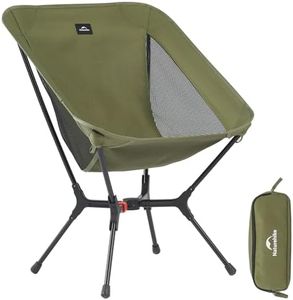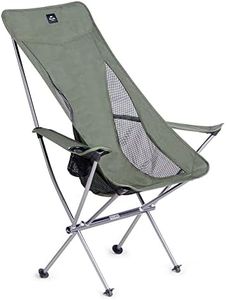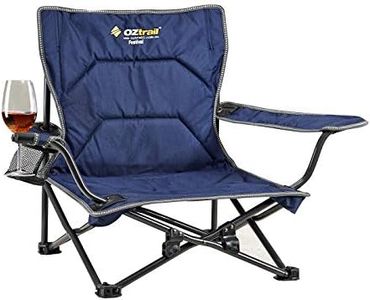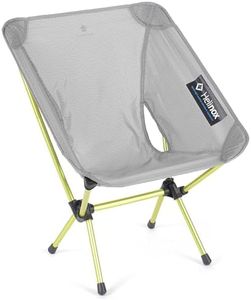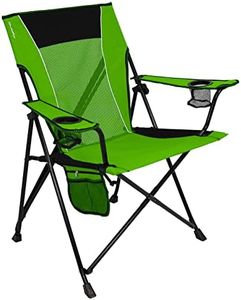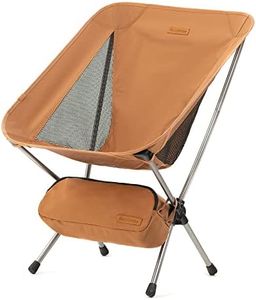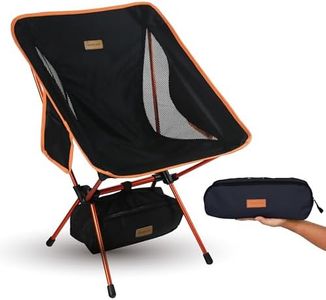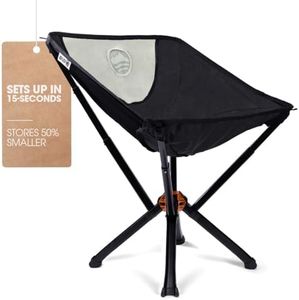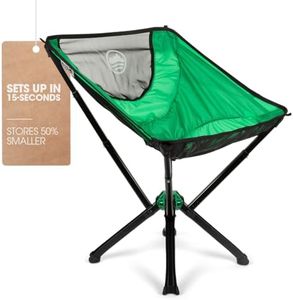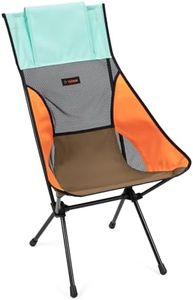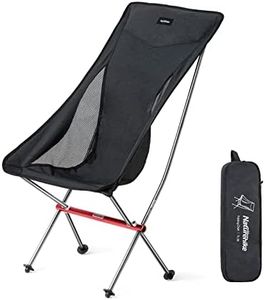We Use CookiesWe use cookies to enhance the security, performance,
functionality and for analytical and promotional activities. By continuing to browse this site you
are agreeing to our privacy policy
10 Best Lightweight Camping Chairs
From leading brands and best sellers available on the web.By clicking on a link to a third party's website, log data is shared with that third party.
Buying Guide for the Best Lightweight Camping Chairs
Choosing a lightweight camping chair means finding a balance between comfort, portability, and functionality. Since these chairs are designed to be carried to campsites, hiking spots, or outdoor festivals, it's important to match the chair’s features to the way you plan to use it. Think about how far you’ll carry the chair, the terrain, and how much time you'll spend sitting. This helps ensure you end up with a seat that not only saves your back during the trek but provides enough relaxation at your destination.WeightWeight refers to how much a chair weighs when it’s packed and ready to go. This is crucial for lightweight camping chairs because the less a chair weighs, the easier it is to carry, especially over long distances. Chairs generally range from under 1 pound to about 4 pounds. For backpackers or hikers who count every ounce, chairs under 2 pounds are ideal. For car campers or those who only need to carry the chair a short distance, heavier models can provide more comfort without being a burden. Choose a weight that matches how far and often you’ll be carrying the chair.
Packed SizePacked size is how small the chair becomes when folded up and stored in its carrying case or bag. This is important because if your chair packs down small, it will fit more easily into your backpack or trunk, and be less cumbersome to carry. Some chairs pack down to the size of a water bottle, while others fold flatter but stay long. If you have limited space or are carrying other gear, look for a chair with a compact packed size. If portability is less of a concern, you can be more flexible about size.
Weight CapacityWeight capacity tells you the maximum weight a chair is designed to support. This ensures the chair can safely and comfortably hold you. Most chairs handle between 200 and 320 pounds. If you are close to the upper limit or plan to share the chair with others, opt for a higher weight capacity for better durability and peace of mind. Make sure the listed maximum supports everyone who may use the chair.
Seat HeightSeat height is how high the chair sits off the ground. This affects comfort, especially when getting in and out of the chair. Low chairs (under 10 inches) are great for lounging or on sandy surfaces, but can be harder to rise from—especially for tall users or those with knee issues. Higher chairs (13 inches or more) are easier to get up from and feel more like regular chairs. Pick your seat height based on your comfort, mobility, and typical sitting situations.
Comfort and SupportComfort and support include the shape of the seat, backrest, and the materials used. Some chairs have a scooped shape or extra padding, while others are just simple fabric slings. Mesh panels can keep you cool, and ergonomic frames can help with posture. If you plan to sit for extended periods, look for chairs with good back support and a comfortable seat. If sitting time will be short, or if saving weight is your priority, simpler designs may be sufficient.
Ease of SetupEase of setup refers to how quickly and simply the chair can be assembled and packed away. Some chairs pop open instantly, while others have separate poles to assemble. If you value speed or don’t want to fuss at the end of a long hike, pick a chair that’s easy to set up, with fewer steps and intuitive design. If you don’t mind a few extra minutes at camp, more complex setups may provide added features or pack smaller.
Durability and MaterialsDurability is determined by the quality of the materials, such as the frame (usually aluminum or steel) and the seat fabric (often nylon or polyester). Stronger materials last longer and withstand rough treatment but can add weight. If you plan on frequent, rugged use or if the chair will be exposed to the elements, prioritize tougher materials. Occasional or gentle use lets you get away with lighter or less robust options.
